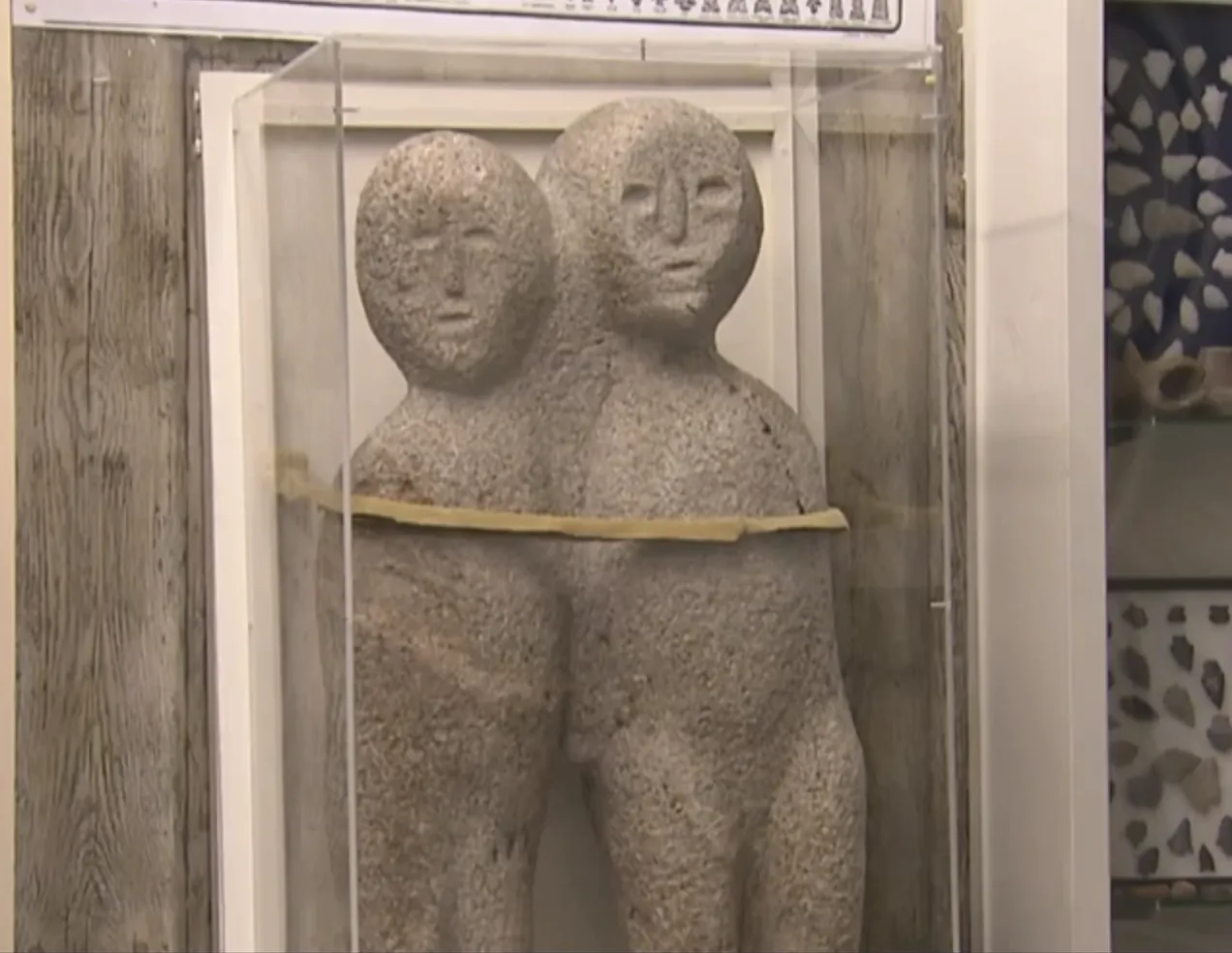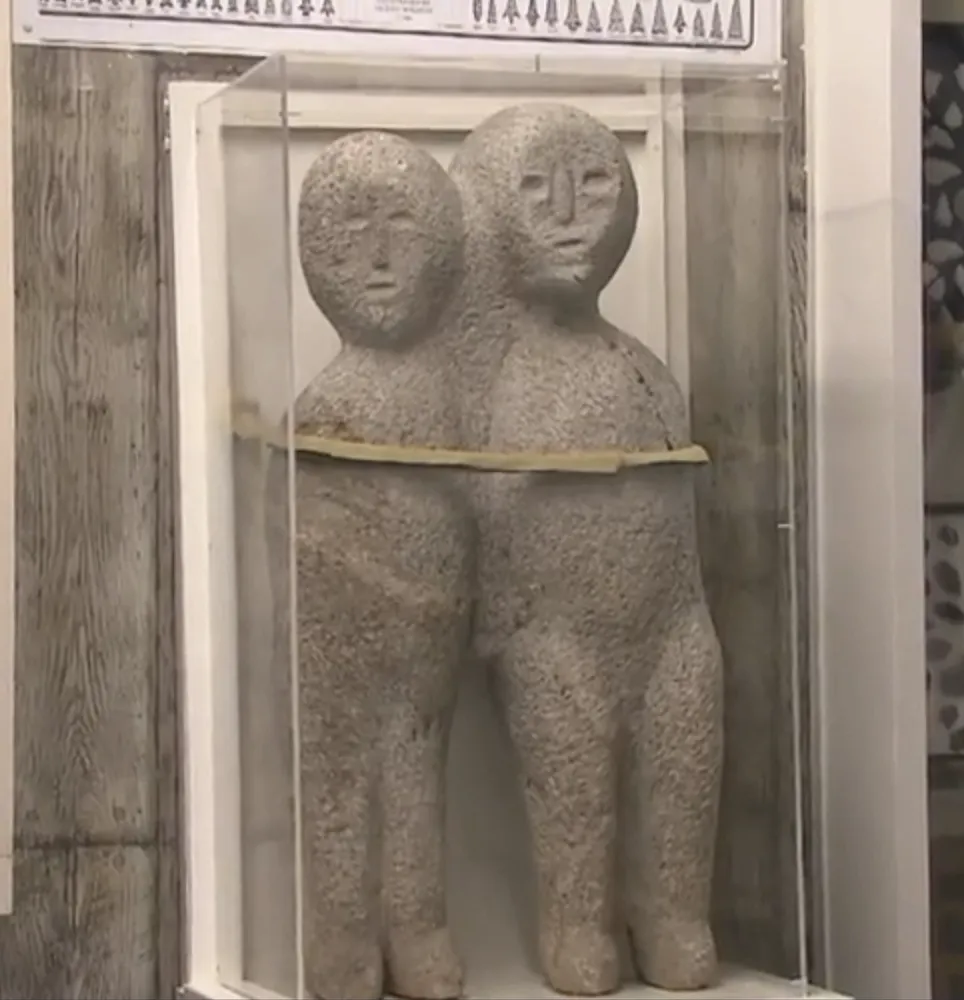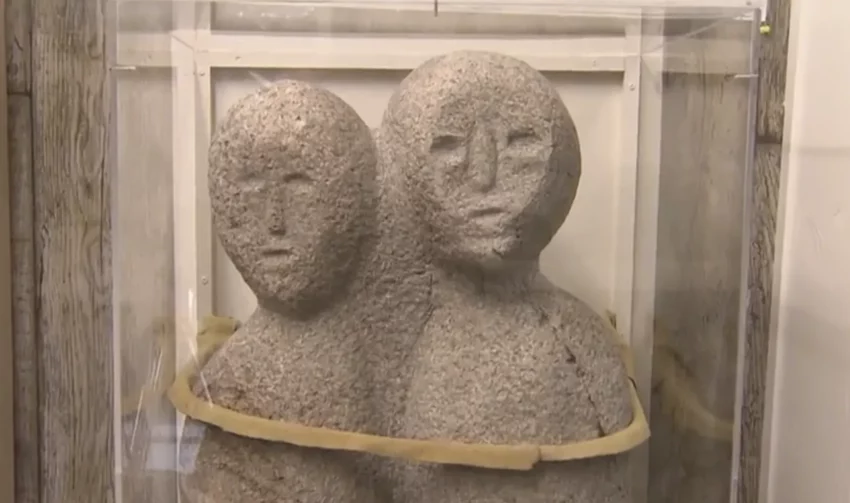The Enigmatic Moon-Eyed People of Appalachia
In the early 1840s, a farmer named Felix Ashley stumbled upon something extraordinary while clearing his land near Murphy, North Carolina. What he unearthed was an effigy known as “The Moon-Eyed People,” which remained hidden until it was displayed publicly in 2015. Crafted through an ancient technique involving pounding stones with smaller, harder rocks, this effigy dates back to around the time of Christ. The Moon-Eyed People, according to local legend, were small, pale, and had striking blue eyes and blonde or white hair.
Get your dose of History via Email
A Hidden Treasure in the Cherokee County Historical Museum
If you visit the Cherokee County Historical Museum, you will find a rich collection of Cherokee artifacts, tools, and over 700 dolls donated by a local resident named Louise Kilgore. In the museum’s basement, you’ll discover The Moon-Eyed People, a modest three-foot sculpture encased in glass that resembles conjoined aliens. But who were these mysterious Moon-Eyed People? Some speculate they were aliens, while others believe they were mole-like people who lived underground.

The Story Behind the Name
After the Native American removal in 1838, a Raleigh senator named Archibald Murphy introduced a bill to establish the county seat, which led to the town being named Murphy. In 1841, Felix Ashley bought six acres in Murphy, and while digging up his property, he found the Moon-Eyed People effigy. He dragged it back to his house and leaned it against his well house, unknowingly preserving a piece of mysterious history.
Legends and Myths of the Moon-Eyed People
According to Cherokee legends, these mountains were home to the Moon-Eyed People long before the Cherokee arrived around 1100-1200. These people were described as short, white, flat-faced, and blue-eyed. Their eyes were so sensitive to sunlight that they worked only at night. The Cherokee eventually displaced them, but the stories of these ancient inhabitants persisted.
Early European Accounts and Theories
Stories of the Moon-Eyed People have intrigued European settlers since the late 18th century. In 1797, Benjamin Smith Barton wrote about these moon-eyed people, attributing their name to their poor daylight vision. Some tales suggest they built pre-Columbian ruins in the area before mysteriously disappearing. Barton’s source was Colonel Leonard Marbury, an early Georgian settler and intermediary between Native American tribes and the U.S. government.

Debates on Authenticity and Origins
The existence and origin of the Moon-Eyed People have sparked debates for over two centuries. Some sources question whether these stories are genuine parts of Cherokee oral tradition or mere myths. Others argue if these people were indigenous or early European explorers. Theories about their contributions to prehistoric structures in the region also vary.
The Fort Mountain Connection
A historical marker at Fort Mountain State Park in Georgia mentions the Moon-Eyed People and speculates on the origins of the area’s ancient wall. It suggests these people might have been unable to see during certain moon phases, leading to their downfall at the hands of the Creek people. Some believe the Moon-Eyed People built the fortifications on Fort Mountain.
Perspectives and Opinions
Authors and historians have revisited the Moon-Eyed People legend, offering various interpretations. Welsh historian Gwynn Williams pointed out how 18th-century white settlers’ minds influenced these tales. Some later accounts link the Moon-Eyed People with a Welsh explorer named Madoc, who allegedly arrived in the area long before Columbus.
Similar Legends Across Regions
Legends of moon-eyed people are not confined to Appalachia. Some stories relate to other regions and cultures. For example, Barbara Alice Mann suggests a connection between the Moon-Eyed People and the Adena culture in Ohio, merging with the Cherokee around 200 BCE. Charles Loftus Grant Anderson’s 1914 book mentions moon-eyed people described by Lionel Wafer, adding another layer of mystery to these ancient legends.
The Moon-Eyed People remain an enigmatic part of Appalachian folklore, with stories that continue to captivate and puzzle historians and enthusiasts alike.
Sources:

